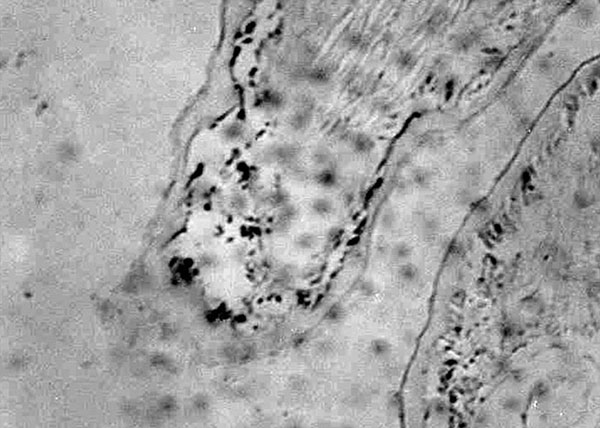Volume 9, Number 2—February 2003
Dispatch
Infection of Cultured Human and Monkey Cell Lines with Extract of Penaeid Shrimp Infected with Taura Syndrome Virus
Figure 2

Figure 2. Microscopic image of the subcuticular tissue of the pleopod from a shrimp infected with the supernatant of the third passage of a human larynx carcinoma (Hep-2C) cell culture inoculated with an extract of shrimp infected with Taura syndrome virus. The presence of the virus is clearly visible by in situ hybridization as black spots after the samples were stained with Bismarck brown.
Page created: December 07, 2010
Page updated: December 07, 2010
Page reviewed: December 07, 2010
The conclusions, findings, and opinions expressed by authors contributing to this journal do not necessarily reflect the official position of the U.S. Department of Health and Human Services, the Public Health Service, the Centers for Disease Control and Prevention, or the authors' affiliated institutions. Use of trade names is for identification only and does not imply endorsement by any of the groups named above.